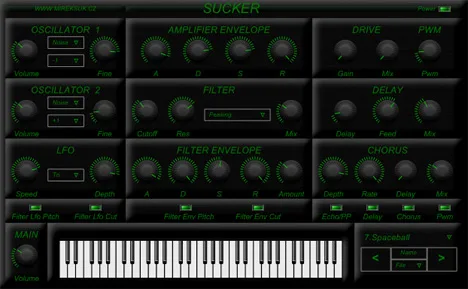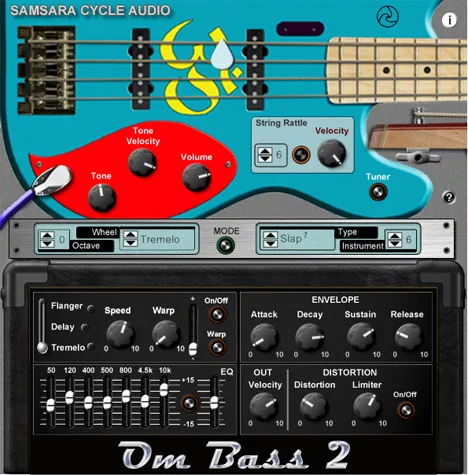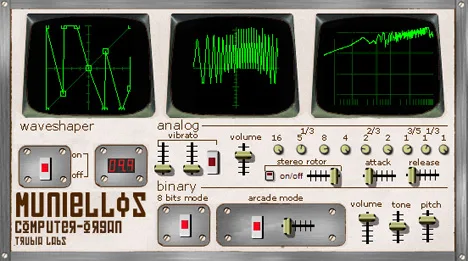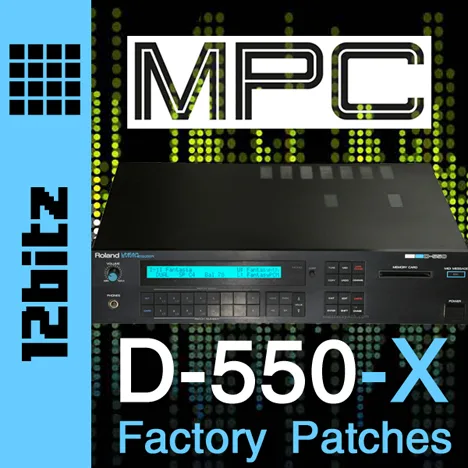Welcome to the review of Sucker VST – an interesting virtual instrument that will breathe an analog soul into your musical projects. Developed by Mireksuk, this synthesizer offers a classic approach to sound creation, focusing on simplicity and efficiency, making it an excellent choice for both beginners in the world of synthesis and experienced musicians looking for a specific vintage timbre.
In an era of overly complex plugins, Sucker VST stands out with its clear structure and intuitive interface. It takes us back to the basics of subtractive synthesis, where two oscillators generate the basic tone, and then this signal passes through a series of modulators and effects to shape the final sound. This allows you to quickly master the instrument and focus on creativity, rather than navigating complex menus.
The Heart of the Synthesizer: Oscillators and Envelopes
At the heart of Sucker VST are two oscillators. While the details of the wave types are not specified, typical analog synthesizers offer a standard set (sine, saw, square, triangle, noise), which allows you to create a wide range of timbres – from soft pads and rich basses to sharp leads and experimental textures. The interaction between the two oscillators opens up possibilities for creating more complex sounds through detuning or mixing different waveforms.
The dynamics of the sound are controlled by two key envelopes:
- Amplifier Envelope: A standard ADSR (Attack, Decay, Sustain, Release) envelope that controls how the sound rises, falls to the sustain level, and decays after the key is released. This is a fundamental tool for shaping the sound – from sharp percussive sounds to slowly evolving pads.
- Filter Envelope: This envelope also works on the ADSR principle and is critical for creating expressive timbres. Its main function is to modulate the cutoff frequency of the filter, allowing the filter to open or close over time. This adds movement and life to a static sound. In addition, the filter envelope can modulate the pitch, opening the door to creating effects like swoops, vibrato, or other interesting tonal changes.
Sculpting the Timbre: Filters and LFO
Sucker VST is equipped with a multi-mode filter with five types:
- Low Pass: Passes frequencies below the cutoff point, ideal for softening the sound, creating basses, or imitating classic analog filters.
- High Pass: Passes frequencies above the cutoff point, useful for removing “mud” from the lower range or creating ringing, thin sounds.
- Band Pass: Passes frequencies within a certain range, creating a characteristic “telephone” sound or Wah-Wah effects.
- Band Reject: Removes frequencies within a certain range, useful for eliminating resonances or creating interesting spectral effects.
- Peaking: Amplifies or weakens frequencies around the cutoff point, allows you to create expressive resonances or tonal accents.
The ability to modulate the cutoff frequency using the filter envelope or LFO makes the filter one of the most powerful tools for shaping the timbre in Sucker VST.
LFO (Low-Frequency Oscillator): The low-frequency generator adds cyclic modulation to the sound. In Sucker VST, the LFO can modulate either the filter cutoff frequency (for Wah-Wah, filter tremolo effects) or the pitch (for vibrato). This allows you to add life and rhythmic movement to the sound without having to program complex automations.
Final Touches: Built-in Effects
To complete the sound palette, Sucker VST has three built-in effects:
- Delay: Adds repeats to the sound, creating a sense of space or rhythmic echoes. A classic effect for synthesizers.
- Chorus: Thickens the sound, adding width and richness by duplicating the signal with a slight pitch modulation and delay. Great for pads and leads.
- Overdrive: Gives the sound a warm analog saturation or aggressive distortion. Allows you to “warm up” the timbre, make it more present and distinctive.
These effects, integrated directly into the plugin, allow you to quickly give the sound a final look without using additional processing.
Ready to Use: Presets
For a quick start, Sucker VST comes with 20 ready-made presets. This is an excellent starting point for exploring the synthesizer’s capabilities or using the sounds “as is” in your tracks. Presets often demonstrate different aspects of the instrument and can inspire you to create your own unique timbres.
Sucker VST is an attractive choice for those looking for a simple but effective analog-oriented synthesizer for Windows. Its focus on the basic elements of synthesis, combined with useful built-in effects and a diverse filter, makes it a worthy addition to the arsenal of any producer or musician who appreciates classic synthesizer sound.



